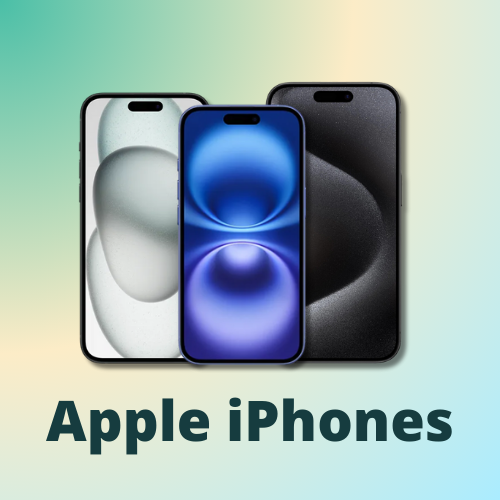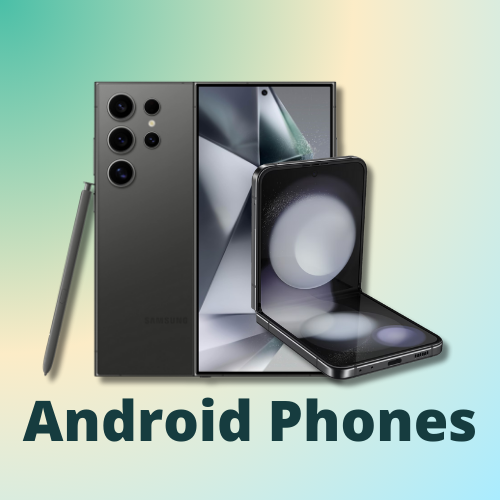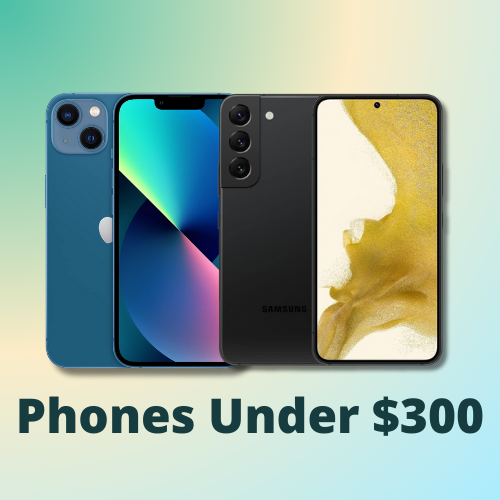Comparing the iPhone X and iPhone 12: Which is the Better Choice?
Are you in the market for a new iPhone? With so many options available, it can be overwhelming to choose the right one. In this article, we will be comparing the iPhone X and the iPhone 12 to help you make an informed decision. Both of these Apple devices have their own unique features and capabilities, but which one is truly the better choice? Let's dive in and find out!
Understanding the iPhone X
The iPhone X was released in 2017, marking a major milestone in Apple's smartphone history. It introduced several groundbreaking features that set it apart from its predecessors. First and foremost, the iPhone X featured a bezel-less design with a stunning edge-to-edge Super Retina display. This gave users a larger viewing area and an immersive visual experience like never before.
But what made the iPhone X truly revolutionary was its ability to seamlessly integrate hardware and software. The A11 Bionic chip, specifically designed for the iPhone X, delivered exceptional performance and speed. Whether you were multitasking, gaming, or running graphics-intensive applications, the iPhone X handled it all effortlessly. The combination of the powerful chip and the iOS operating system created a smooth and fluid user experience.
One of the key features of the iPhone X was Face ID, Apple's facial recognition system. It allowed users to unlock their device and authenticate payments with just a glance. This was a significant advancement in biometric security and made the iPhone X stand out in a crowded market. The technology behind Face ID was truly remarkable, using a combination of infrared cameras and sensors to create a detailed map of the user's face. This ensured that only the owner of the device could access its contents, adding an extra layer of security.
In terms of photography, the iPhone X took smartphone cameras to a whole new level. With a dual lens setup consisting of a 12-megapixel wide-angle lens and a 12-megapixel telephoto lens, users could capture stunning photos with depth and detail. The advanced image signal processor and optical image stabilization further enhanced the quality of the photos, even in low-light conditions. Additionally, the iPhone X introduced the popular Portrait Mode, which allowed users to take professional-looking photos with bokeh effects. This feature, combined with the powerful camera hardware, made the iPhone X a favorite among photography enthusiasts.
But the iPhone X was not just about the hardware and software. It also brought a new level of convenience to users with wireless charging. With the introduction of the glass back, the iPhone X was compatible with Qi wireless charging pads, eliminating the need for cables and adapters. This made charging your iPhone X as simple as placing it on a charging pad, adding a new level of convenience to everyday life.
Overall, the iPhone X was a game-changer in the smartphone industry. It pushed the boundaries of design, performance, and security, setting a new standard for what a smartphone could be. With its bezel-less display, powerful A11 Bionic chip, advanced camera capabilities, and innovative features like Face ID and wireless charging, the iPhone X truly revolutionized the way we use our smartphones.
Delving into the iPhone 12
The iPhone 12, released in 2020, built upon the success of the iPhone X and brought several new features to the table. One of the highlights of the iPhone 12 was its design. It featured a flat-edged design reminiscent of the iPhone 4, giving it a sleek and modern look. The Ceramic Shield front cover offered improved durability, making it more resistant to drops and scratches.
But let's dive deeper into the design of the iPhone 12. The flat-edged design not only gave it a timeless aesthetic appeal, but it also made it easier to hold and grip. The squared-off edges provided a comfortable and secure feel in the hand, ensuring that the phone wouldn't slip out of your grasp. This design choice was not only visually pleasing but also practical, enhancing the user experience.
When it came to display, the iPhone 12 featured a Super Retina XDR display, offering incredibly vibrant colors and deep blacks. But what made this display truly remarkable was its ability to support HDR10 and Dolby Vision. This meant that when watching HDR content, such as movies or TV shows, the iPhone 12 would deliver a stunning visual experience with enhanced contrast and dynamic range. The colors would pop, the shadows would be rich, and every detail would come to life, immersing you in the content like never before.
But the display wasn't the only thing that made the iPhone 12 a powerhouse. Under the hood, it was powered by Apple's A14 Bionic chip, which offered even faster performance and improved energy efficiency. This meant smoother multitasking, faster app launches, and better overall performance. Whether you were editing videos, playing graphics-intensive games, or using augmented reality apps, the iPhone 12 handled it all with ease.
But what exactly made the A14 Bionic chip so impressive? Well, it was built using a 5-nanometer process, making it one of the most advanced chips in the industry. This allowed for more transistors to be packed into a smaller space, resulting in increased performance and energy efficiency. The A14 Bionic chip also featured a 16-core Neural Engine, which enabled lightning-fast machine learning tasks. This meant that the iPhone 12 could analyze and process data more efficiently, resulting in improved camera performance, enhanced augmented reality experiences, and faster Face ID recognition.
Speaking of the camera system, the iPhone 12 didn't disappoint. It featured a dual-lens setup with a 12-megapixel wide-angle lens and a 12-megapixel ultra-wide lens. This combination allowed users to capture a wide range of perspectives, from sweeping landscapes to up-close details. But it wasn't just the hardware that made the camera system impressive; it was also the software.
The iPhone 12 introduced Smart HDR 3, which leveraged the power of the A14 Bionic chip to capture photos with more detail and better dynamic range. This meant that even in challenging lighting conditions, such as bright skies or low-light environments, the iPhone 12 could produce stunning photos with balanced exposure and accurate colors.
But what about low-light photography? Well, the iPhone 12 took it to the next level with its improved Night mode capabilities. With Night mode, users could capture stunning photos in extremely low-light situations, such as dimly lit rooms or nightscapes. The iPhone 12 analyzed the scene, optimized the settings, and used advanced algorithms to reduce noise and bring out more detail in the shadows. The result? Nighttime photos that looked like they were taken in broad daylight.
But Apple didn't stop there. The iPhone 12 introduced the new Night mode Time-lapse feature, which brought a new level of creativity to nighttime photography. With this feature, users could capture stunning time-lapse videos of the night sky, cityscapes, or any other subject illuminated by artificial or natural light. The iPhone 12 would intelligently adjust the exposure and capture each frame with precision, resulting in mesmerizing time-lapse videos that showcased the beauty of the night.
So, whether it was the sleek design, the vibrant display, the powerful A14 Bionic chip, or the impressive camera system, the iPhone 12 was a device that pushed the boundaries of what a smartphone could do. It combined cutting-edge technology with thoughtful design choices to deliver an exceptional user experience. And with each new feature and improvement, Apple continued to solidify its position as a leader in the smartphone industry.
Design Differences Between iPhone X and iPhone 12
When it comes to physical appearance, the iPhone X and iPhone 12 have distinct design differences. The iPhone X features a stainless steel frame with a glass back, giving it a premium and sleek look. The stainless steel frame not only adds to the overall aesthetics of the device but also provides durability and structural integrity. The glass back not only contributes to the device's elegant design but also enables wireless charging, allowing users to conveniently charge their iPhones without the need for cables.
On the other hand, the iPhone 12 features an aluminum frame with a glass back, offering a more lightweight and durable design. The aluminum frame not only makes the device lighter but also enhances its resistance to everyday wear and tear. The glass back, similar to the iPhone X, enables wireless charging and adds a touch of sophistication to the overall design.
Another notable difference is the screen size. The iPhone X comes with a 5.8-inch Super Retina display, which provides users with an immersive viewing experience. The Super Retina display offers vibrant colors, deep blacks, and excellent contrast, making it ideal for watching videos, playing games, and browsing content.
On the other hand, the iPhone 12 offers two options: a 6.1-inch Super Retina XDR display and a more compact 5.4-inch Super Retina XDR display with the iPhone 12 mini variant. This gives users more flexibility in choosing a screen size that fits their preference. The Super Retina XDR display takes the viewing experience to the next level with its higher brightness, improved contrast ratio, and HDR support. Whether you prefer a larger display for multimedia consumption or a more compact size for one-handed use, the iPhone 12 has you covered.
Both devices feature Face ID for secure authentication, but the iPhone 12 takes it a step further with the introduction of Face ID 2.0. This version allows for faster and more accurate facial recognition, making it even more convenient to unlock your device and access secure apps. With Face ID 2.0, you can simply glance at your iPhone 12 and have it recognize your face in an instant, providing you with a seamless and secure user experience.
Moreover, the iPhone 12 introduces Ceramic Shield, a new type of glass that is tougher than any smartphone glass. This innovative material goes beyond traditional glass and is infused with nano-ceramic crystals to dramatically improve drop performance. With Ceramic Shield, the iPhone 12 offers four times better drop performance, reducing the chances of accidental damage and giving users peace of mind.
In conclusion, while the iPhone X and iPhone 12 share some similarities in terms of design, they also have distinct differences that set them apart. From the choice of materials to the screen size and advanced features like Face ID 2.0 and Ceramic Shield, each device offers its own unique advantages, catering to the diverse needs and preferences of users.
Software and Hardware Comparison
Now let's talk about the software and hardware aspects of these devices. Both the iPhone X and iPhone 12 run on Apple's iOS operating system, which offers a seamless and intuitive user experience. However, the iPhone 12 benefits from the latest iOS updates, providing access to new features, improvements in performance, and enhanced security.
Battery life is an important factor to consider, especially for heavy smartphone users. The iPhone X offered decent battery life, but the iPhone 12 takes it to the next level. With more power-efficient components and optimizations, the iPhone 12 offers better battery life, allowing you to go longer without needing to recharge.
Another crucial aspect is charging capabilities. The iPhone X featured fast charging, which allowed you to quickly charge your device to a certain percentage in a short amount of time. The iPhone 12, on the other hand, introduced MagSafe, a magnetic wireless charging system that offered convenience and faster charging speeds compared to the iPhone X.
Price Comparison: iPhone X vs iPhone 12
Finally, let's talk about the price and cost of ownership. When the iPhone X was released, it came with a hefty price tag. However, as newer models were introduced, the price of the iPhone X decreased significantly, making it a more affordable option for those on a budget.
On the other hand, the iPhone 12, being the latest iteration, comes with a higher initial price. However, considering the hardware and software advancements, along with the longer lifespan of the device, the iPhone 12 offers better value for money in the long run.
Additionally, the iPhone 12 holds its value better over time. Thanks to its newer features and design, it is likely to have a higher resale value compared to the iPhone X, making it a smarter investment if you plan to upgrade in the future.
Conclusion
After comparing the iPhone X and iPhone 12 in various aspects, it's clear that they both have their own strengths and advantages. The iPhone X introduced innovative features such as Face ID and a bezel-less display, while the iPhone 12 built upon those foundations with an updated design, improved performance, and enhanced camera capabilities.
If you're looking for a more budget-friendly option with a stylish design and solid performance, the iPhone X may be the better choice for you. However, if you want the latest features, improved durability, and better overall performance, the iPhone 12 is the way to go.
Ultimately, the decision comes down to your personal preferences, budget, and specific needs. Take into consideration the features and capabilities that matter most to you and choose the iPhone that aligns with your requirements. Whichever device you choose, both the iPhone X and iPhone 12 are excellent choices that will undoubtedly enhance your smartphone experience.







